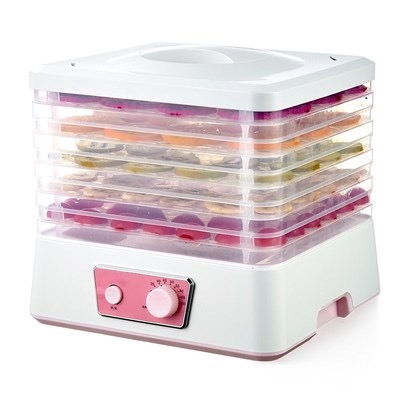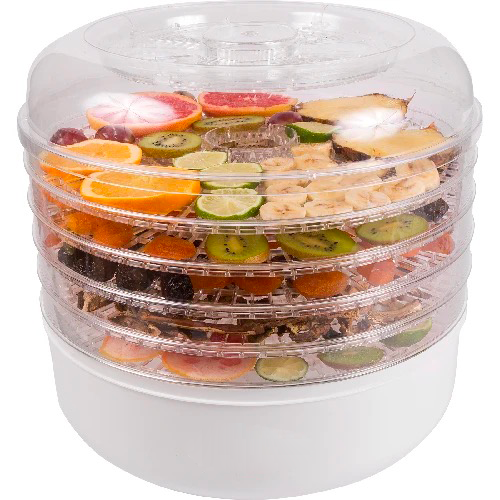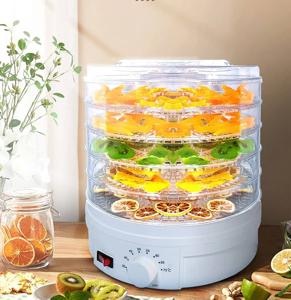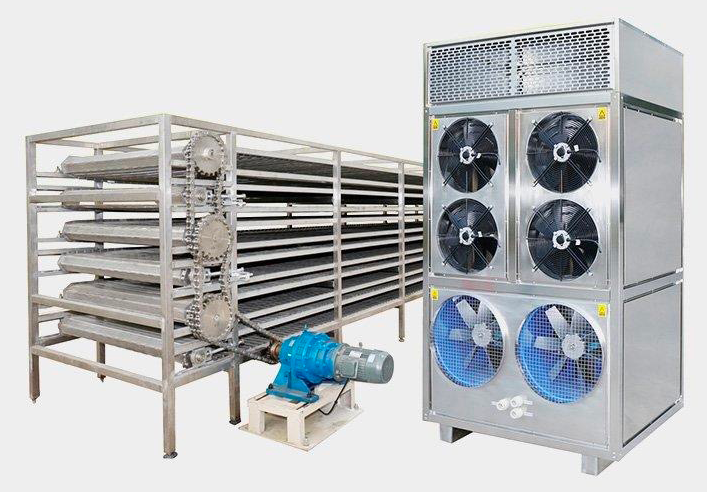
Content Menu
● Understanding Heat Pump Dryers
>> How Heat Pump Dryers Work
● Energy Efficiency of Heat Pump Dryers
● Comparing Heat Pump Dryers with Traditional Dryers
● Benefits of Using Heat Pump Dryers for Food Processing
● Applications of Heat Pump Dryers in Food Industry
>> Expanded Applications
● Challenges and Considerations
>> Maintenance Requirements
● Conclusion
● Frequently Asked Questions
>> 1. Are heat pump dryers suitable for all types of food?
>> 2. How much energy can I save by using a heat pump dryer?
>> 3. What is the typical lifespan of a heat pump dryer?
>> 4. Can I use a heat pump dryer in humid climates?
>> 5. Do I need special training to operate a heat pump dryer?
In the world of food processing and preservation, drying is a crucial method for extending the shelf life of various products. As a manufacturer of food dryers, particularly heat pump dryers, we often encounter questions regarding their energy efficiency and performance. This article will explore the intricacies of heat pump dryers, their energy-saving capabilities, and how they compare to traditional drying methods.

Understanding Heat Pump Dryers
Heat pump dryers utilize a unique technology that sets them apart from conventional dryers. Instead of generating heat through electrical resistance or gas combustion, heat pump dryers recycle heat from the air. This process involves extracting moisture from the food items and transferring it to a refrigerant, which is then compressed to generate heat. The heated air is circulated back into the drying chamber, allowing for efficient moisture removal.
How Heat Pump Dryers Work
1. Air Circulation: The dryer draws in ambient air, which is then heated by the compressor.
2. Moisture Extraction: The warm air passes over the food items, absorbing moisture in the process.
3. Condensation: The moisture-laden air is directed to a condenser where it cools down, causing the water vapor to condense into liquid form.
4. Heat Recovery: The remaining dry air is reheated and recirculated back into the drying chamber.
This cycle continues until the desired moisture content of the food is achieved.
Energy Efficiency of Heat Pump Dryers
One of the most significant advantages of heat pump dryers is their energy efficiency. They typically consume less energy compared to traditional dryers due to their ability to recycle heat. Here are some key points regarding their energy-saving capabilities:
- Lower Operating Temperatures: Heat pump dryers operate at lower temperatures than conventional dryers, which helps preserve the quality and nutritional value of food.
- Less Energy Consumption: While it may take longer to dry food with a heat pump dryer, the overall energy consumption is significantly lower. This is because they utilize ambient heat and recycle energy rather than generating it anew.
- Sustainability: By using less electricity and reducing waste heat, heat pump dryers contribute to more sustainable food processing practices.

Comparing Heat Pump Dryers with Traditional Dryers
To better understand the benefits of heat pump dryers, let's compare them with traditional drying methods:
| Feature | Heat Pump Dryer | Traditional Dryer |
| Energy Consumption | Low | High |
| Drying Temperature | Low | High |
| Drying Time | Longer | Shorter |
| Moisture Retention | High | Variable |
| Environmental Impact | Minimal | Significant |
While traditional dryers may offer faster drying times, they often do so at the cost of higher energy consumption and potential degradation of food quality.
Benefits of Using Heat Pump Dryers for Food Processing
Heat pump dryers offer several advantages for food manufacturers and processors:
- Quality Preservation: The low-temperature drying process helps retain flavor, color, and nutritional value in dried foods.
- Versatility: These dryers can handle a wide variety of foods, including fruits, vegetables, meats, and herbs.
- Cost Savings: Although initial investment costs may be higher for heat pump dryers, long-term savings on energy bills can make them more economical over time.
- Reduced Carbon Footprint: By consuming less energy and producing less waste heat, these dryers are more environmentally friendly compared to traditional options.
Applications of Heat Pump Dryers in Food Industry
Heat pump dryers can be used in various applications within the food industry:
- Fruit Drying: Ideal for drying fruits like apples, bananas, and berries while preserving their natural sweetness and color.
- Vegetable Dehydration: Effective for dehydrating vegetables such as carrots, peas, and peppers without losing essential nutrients.
- Herb Drying: Perfect for drying herbs like basil and thyme while maintaining their aromatic properties.
- Meat Drying: Suitable for producing jerky or dried meats with enhanced flavor profiles.
Expanded Applications
In addition to these common applications, heat pump dryers are also effective in niche markets such as:
- Snack Production: The rise in health-conscious consumers has led to increased demand for dried snacks. Heat pump dryers can produce high-quality dried fruits and vegetable chips that retain their nutrients and flavor.
- Pharmaceuticals: In pharmaceutical manufacturing, precise moisture control is crucial. Heat pump dryers can provide consistent results necessary for producing high-quality medicinal products.
- Pet Food Production: The pet food industry benefits from using heat pump technology to create nutritious dried food products that are safe for animal consumption.
Challenges and Considerations
Despite their many advantages, there are some challenges associated with heat pump dryers:
- Longer Drying Times: As previously mentioned, one downside is that drying times can be longer compared to traditional methods. However, this trade-off is often justified by energy savings and improved product quality.
- Initial Investment Costs: The upfront cost of purchasing a heat pump dryer can be higher than that of conventional dryers. However, this should be viewed as an investment in long-term savings and sustainability.
Maintenance Requirements
Maintaining a heat pump dryer is essential for ensuring its longevity and efficiency. Regular maintenance includes:
- Cleaning Filters: Dust and lint can accumulate in filters over time; regular cleaning ensures optimal airflow and efficiency.
- Inspecting Seals: Checking door seals for wear or damage prevents loss of heated air and improves efficiency.
- Monitoring Refrigerant Levels: Ensuring proper refrigerant levels keeps the system functioning effectively.
By adhering to these maintenance practices, users can maximize the performance of their heat pump dryers while minimizing operational issues.
Conclusion
In conclusion, while heat pump dryers may take longer to dry food compared to traditional methods, they offer significant energy savings and quality preservation benefits. Their ability to operate at lower temperatures not only conserves energy but also enhances the nutritional value and flavor profile of dried foods. For manufacturers looking to improve efficiency while reducing environmental impact, investing in a heat pump dryer presents an excellent opportunity.

Frequently Asked Questions
1. Are heat pump dryers suitable for all types of food?
Yes, they are versatile and can effectively dry fruits, vegetables, meats, herbs, snacks, pharmaceuticals, and even pet foods.
2. How much energy can I save by using a heat pump dryer?
Users typically report savings of up to 50% in energy consumption compared to traditional dryers due to their efficient recycling of heat.
3. What is the typical lifespan of a heat pump dryer?
With proper maintenance, a heat pump dryer can last 10-15 years or more depending on usage patterns and care taken by operators.
4. Can I use a heat pump dryer in humid climates?
Yes, they are designed to operate efficiently in various environmental conditions including high humidity levels by effectively managing moisture extraction.
5. Do I need special training to operate a heat pump dryer?
Most models are user-friendly; however, basic training on operation and maintenance is recommended for optimal performance.
By considering these factors when selecting a drying solution for your business needs, you can make an informed decision that balances efficiency with product quality while contributing positively to environmental sustainability efforts.












